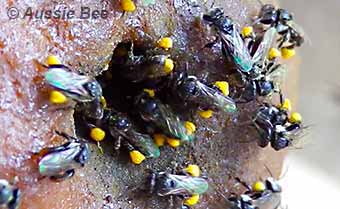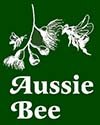STINGLESS BEES (Tetragonula & Austroplebeia)
Aussie Bee > Native Bee Photo Gallery > Stingless Bees
The stingless social native bees in Australia belong to two groups or genera: Tetragonula and Austroplebeia. All the bees are black and about 3 to 4 mm long. However, a close look reveals slight differences in their hair patterns and colour markings. If you are interested in distinguishing the eleven different species of Australian Stingless Bees, take a look at Aussie Bee's eBook: How to Recognise the Different Types of Australian Stingless Bees.
Tetragonula - previously called Trigona
The Tetragonula bees have bodies that are black or dark brown, but they have dense white fur on the sides of their thorax and their faces. (The Tetragonula bees were previously called Trigona -- why was their name changed?) This excellent action photograph by 'Peter O' shows a Tetragonula carbonaria bee in flight, carrying two huge balls of pollen:
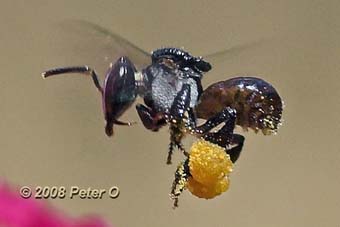
| See Videos of Stingless Bees. More Photos of Stingless Bees by 'Peter O'. |
Austroplebeia
The Austroplebeia Stingless Bees are also mostly black, though in some species the abdomen colour can range from cream to orange. In addition, most species have narrow cream to yellow markings on the rear edge of the thorax and on the face.
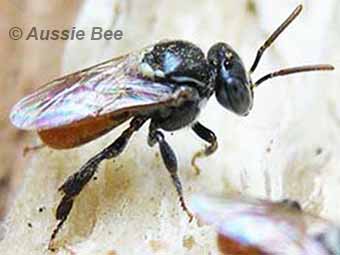
Above: an Austroplebeia australis Stingless Bee with an orange abdomen. This worker bee also has fine cream markings on the sides and rear edge of the thorax. Many Austroplebeia have just two to four cream spots on the rear edge of the thorax, and a few Austroplebeia have no cream markings on the thorax at all.
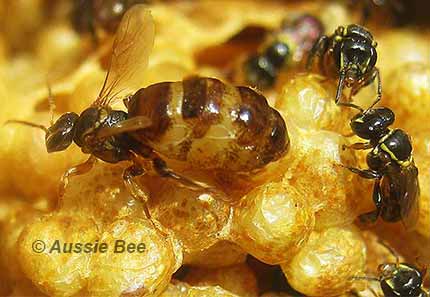
Above: a queen and worker bees of the most brightly coloured Austroplebeia species -- Austroplebeia cincta from Cape York, QLD. The worker bees have beautiful bright yellow markings on the face and on the thorax.
The Tetragonula and Austroplebeia Stingless Bees belong to the family Apidae. They are found in warm areas in northern and eastern Australia. They do not occur in the Australian Capital Territory, Victoria, South Australia or Tasmania (more details).
Lonni Aylatt captured these wonderful close up images of our native Tetragonula Stingless Bees, hard at work in their resinous nest. These photographs were kindly sent into Aussie Bee by Lonni's father, Keith Bragg:
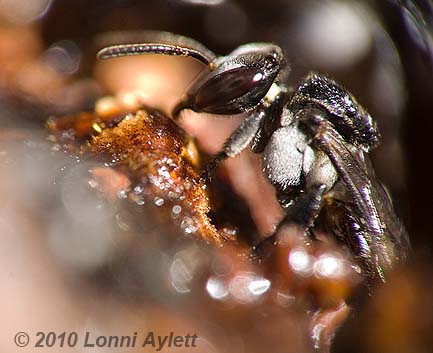
Above: in this photograph you can see the even coating of thick white fur that all Tetragonula carbonaria and Tetragonula hockingsi bees have on the sides of their thorax.
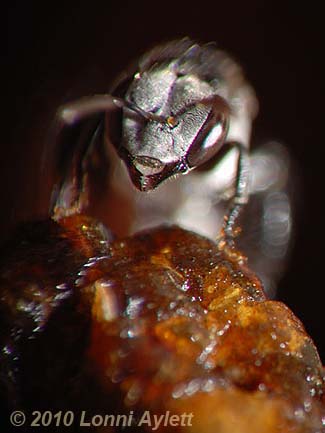
Above: these bees also have thick white fur on their faces. Lonni's photograph clearly shows this bee's large glossy compound eyes and the strong mandibles (or jaws) which the bee uses to work the resin materials in the nest.
Erica Siegel of Queensland photographed this tiny Tetragonula Stingless Bee collecting pollen from some flowers:
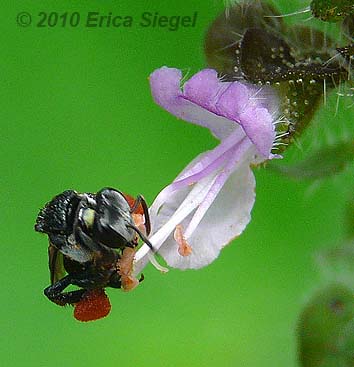
Above: Stingless Bees pack pollen into round balls on their hind legs to carry it back to their nests.
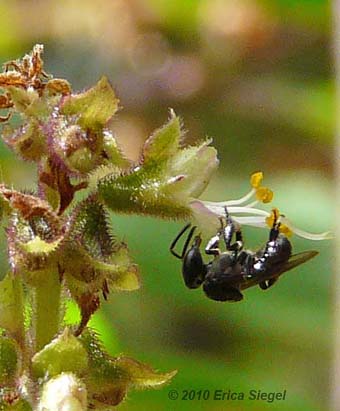
A Tetragonula carbonaria worker bee (previously called Trigona carbonaria) doing the hive housekeeping -- dragging a dead bee out of the hive. These tiny bees have white fur on their faces and sides. This is another stunning close up photograph contributed by Peter O:
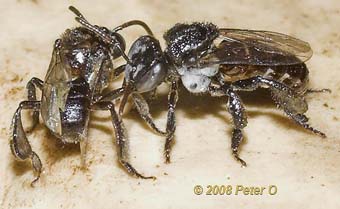
A fascinating photograph by 'Peter O' of a Stingless Bee receiving some rather unwelcome attention from a spider:
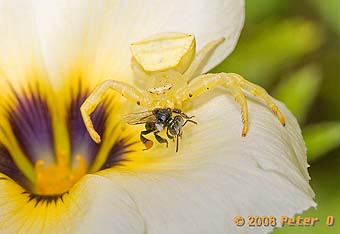
Find Out Which Bees are in Your Area.
More Information on Stingless Bees.
Guidebooks on Keeping Stingless Bees.
New Native Bee Photographs.

